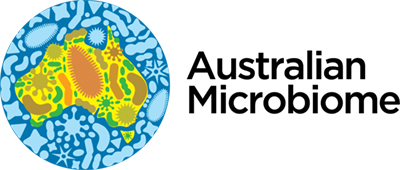Contextual metadata
Download the Contextual Metadata spreadsheet template for all environments sampled
The Australian Microbiome Initiative collects a large numbers of descriptive parameters for each of the sites analysed (a total of 471 discrete parameters across the various sample types of soil, sediments, freshwater, coastal waters, pelagic waters and host). These are provided, as a highly valuable in-kind, by our collaborators and submitters.
We also collect metadata relating to the process of each sample through to the generation of our ‘omics datasets from our network of genomics platforms.
All of this metadata is made publicly available on the Bioplatforms Data portal alongside of the ‘omic datasets.
The metadata describes the various aspects listed below and we endeavour to align with best practice international standards to increase the use and reusability of the microbial genomic resource generated. We also provide (when appropriate) the methodology with which the parameters was defined with a method code linked to our scientific manual (see here for download link)
Location
Each sample has specific details for the location of collection, including latitude and longitude, date/time and all relevant codes or identifiers such as NRS sample code.
In addition, we collect relevant information (controlled vocabulary) on the environment in which the sample was taken, such as for example land use and vegetation type for soil.
Attributions and origin
All samples are contributed by our collaborators and we ensure that the correct attribution is available for both the team contributing these samples and details of funding agencies which may provide support to the projects, such as ARC grants and other agencies.
Physical parameters
The range of physical descriptors include defining granularity of solid samples for soils and sediments, or turbidity and suspended particles for aquatic samples.
Chemical parameters
A comprehensive array of chemical parameters are measured informing on the levels of nutrients available, e.g. phosphate and ammonium, and specific conditions such as pH levels.
Biological parameters
A range of descriptive parameters for associated biota such as flow cytometry counts or pigments measurements.
